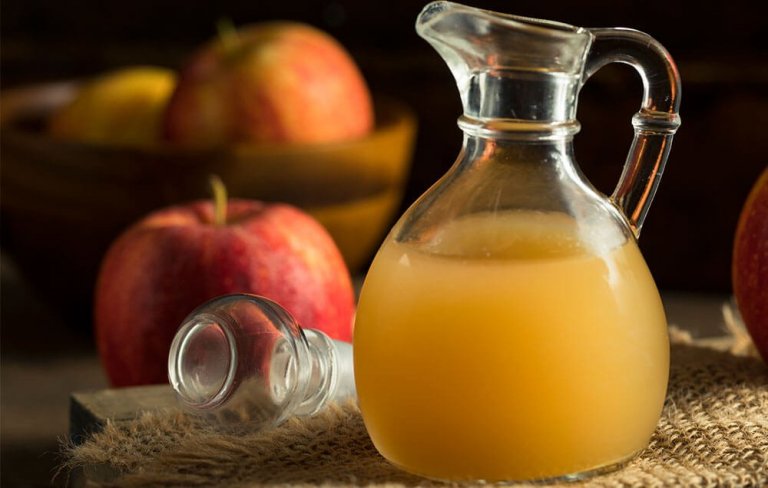The 9 Best Home Tips to Cure Pink Eye


Reviewed and approved by the doctor Maricela Jiménez López
Pink eye is a condition where the transparent membrane covering the eyelid and the white part of the eye become inflamed.
The membrane contains small blood vessels that become irritated when exposed to microorganisms and particles in the air, leading to redness and a burning sensation.
The most frequent cases are the product of a viral or bacterial infection; however, they can also be caused by allergic reactions or contact with irritating substances.
Although the symptoms disappear with the passing of days, even without treatment, it’s a good idea to take into account some tips to speed up your recovery.
In this article, we want to share the 9 home remedies to cure conjunctivitis. They’re very practical and easy to apply, so don’t hesitate to take advantage of them when you face this annoying problem.
Feel free to take notes!
1. Cold compress

The application of a cold compress on the eyelids can calm the burning sensation that occurs in the eyes due to conjunctivitis. Experts endorse its effectiveness, so much so that it is part of the standard non-pharmacological treatment for the condition.
How to use it?
- Wrap several ice cubes in a clean cloth and put it on the affected area.
- Let it sit for 5 to 10 minutes and remove it.
- Make sure to wash and disinfect the cloth before reapplying it.
This last step is very important, and it’s one that you should apply with any other homemade tips to cure conjunctivitis. Keep in mind that it’s a highly contagious condition, so you must take action on the matter.
Recommended reading: 7 Benefits of Applying Ice to Your Skin
2. Chamomile
Chamomile flowers have antibacterial and anti-inflammatory properties that support the recovery of the eyes when there is some type of infection that affects them.
How to use it?
- Chill a couple of bags of chamomile tea and once they’re frozen, place them over your eyes.
- Let them sit for 5 minutes and remove them.
- Use 2 or 3 times a day.
Although they may provide relief, be aware that allergic reactions have been reported after their use. Therefore, discontinue this remedy if symptoms worsen after applying the bags.
3. Apple cider vinegar

How to use it?
- Dilute the vinegar in equal parts warm water.
- Dip a cotton pad in the mixture and apply it to the eyelid.
- Use twice a day.
Given the pH that this and other types of vinegar have, you should be careful with possible adverse reactions. The most common are irritation and itching. Take the test once, and if you don’t develop these symptoms, you have the green light to use it!
4. Cucumber
Rich in water and antioxidant compounds, cucumber is a highly beneficial ingredient for the eyes. Its direct application is known to improve circulation, and swelling and also has a calming effect.
It’s ideal for lessening the appearance of puffiness and under-eye circles, as well as managing redness and itchiness.
How to use it?
- Chill several slices of cucumber and place them over your eyes.
- Let them sit for 10 to 15 minutes and remove them.
- Repeat 3 times a day.
Discard the cucumber slices once you use them. The colder they are, the greater the calming effect they will provide you.
5. Potatoes

Potatoes work a bit like cucumbers. Their natural juice acts as an anti-inflammatory that alleviates affected blood vessels.
How to use it?
- Slice a potato and place it in a refrigerator.
- Once cold, place them over your eyes for 10 minutes.
- Repeat 2 or 3 times a day, as needed.
Specialists remind us that the potato contains multiple thermolabile proteins that can induce hypersensitivity reactions. Keep an eye on how your skin reacts after use. If it becomes more inflamed and irritated, discontinue its application.
6. Green tea to treat pink eye
With all its wonders, green tea has active compounds that treat eye problems.
In the case of pink eye, it reduces swelling and rejuvenates blood flow.
How to use it?
- Place two bags of green tea over your eyelids.
- Let them sit for 5 to 10 minutes.
- Use 3 times a day.
The tea bags must be cold when applied to your eyes. As with cucumber or potato, the colder they are, the greater the relief associated with their use.
7. Coconut oil

Coconut oil is great for fighting wrinkles, but did you know that it’s also useful for combatting irritation from eye infections?
Its antibacterial properties stop microorganisms from thriving and can quicken the relief of swelling and stinging sensations.
How to use it?
- Apply organic coconut oil to a cotton ball and gently rub it over the affected eyelid.
- Leave it on without taking it off and reapply every night.
See also: 10 Beauty Benefits of Coconut Oil
8. Saltwater
This simple remedy works in several ways for eye issues. Firstly, its antiseptic action disinfects the affected area, meaning it stops bacterial growth.
It also acts as a natural lubricant, moisturizing the eyeball when fewer tears are being produced.
How to use it?
- In a bowl, dilute a small amount of salt with warm water.
- Dip your face into the mixture for a few seconds, making sure to open your eyes so that the liquid can get inside of them.
- Pat your face dry and repeat up to 2 times a day.
Naturally, you should regulate the amount of salt that you dilute in the water. If you don’t feel comfortable doing this natural remedy for conjunctivitis, you can always consider others from our selection.
8. Artificial tears
Evidence supports the use of artificial tears for most types of conjunctivitis. They’re particularly useful for allergic conjunctivitis. Artificial tears provide a barrier function, dilute allergens and cleanse the surface of many inflammatory mediators.
How to use them?
- Tilt your head back and pull your eyelid down with your hand.
- Look away from the dropper and squeeze just one drop onto the surface of your eyes.
- Close your eye for 2 minutes without blinking or squinting in the process.
If symptoms don’t improve or worsen, consult a physician. Although this condition doesn’t usually lead to more severe issues, it can develop further and cause complications that may affect your vision.
All cited sources were thoroughly reviewed by our team to ensure their quality, reliability, currency, and validity. The bibliography of this article was considered reliable and of academic or scientific accuracy.
- Azari AA, Arabi A. Conjunctivitis: A Systematic Review. J Ophthalmic Vis Res. 2020 Aug 6;15(3):372-395.
- Bilkhu PS, Wolffsohn JS, Naroo SA, Robertson L, Kennedy R. Effectiveness of nonpharmacologic treatments for acute seasonal allergic conjunctivitis. Ophthalmology. 2014 Jan;121(1):72-78.
- Jeannet-Peter N, Piletta-Zanin PA, Hauser C. Facial dermatitis, contact urticaria, rhinoconjunctivitis, and asthma induced by potato. Am J Contact Dermat. 1999 Mar;10(1):40-2.
- Mukherjee PK, Nema NK, Maity N, Sarkar BK. Phytochemical and therapeutic potential of cucumber. Fitoterapia. 2013 Jan;84:227-36..
- Ousaaid D, Laaroussi H, Bakour M, Ennaji H, Lyoussi B, El Arabi I. Antifungal and Antibacterial Activities of Apple Vinegar of Different Cultivars. Int J Microbiol. 2021 Aug 7;2021:6087671.
- Subiza J, Subiza JL, Alonso M, Hinojosa M, Garcia R, Jerez M, Subiza E. Allergic conjunctivitis to chamomile tea. Ann Allergy. 1990 Aug;65(2):127-32.
This text is provided for informational purposes only and does not replace consultation with a professional. If in doubt, consult your specialist.








